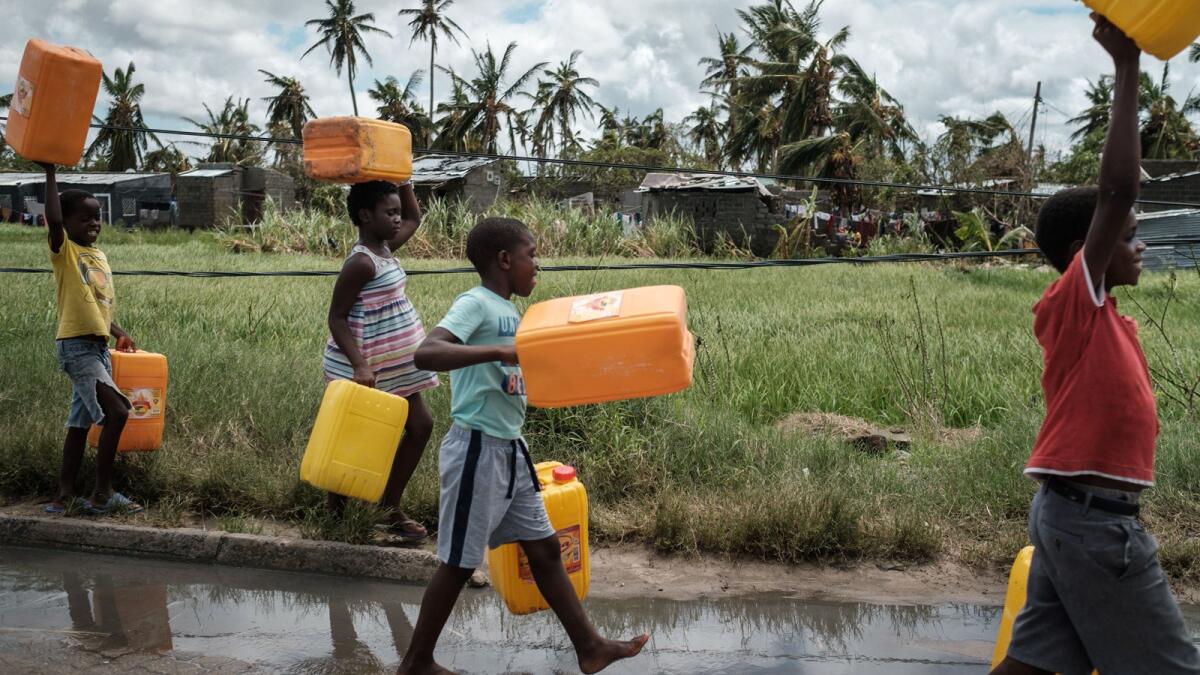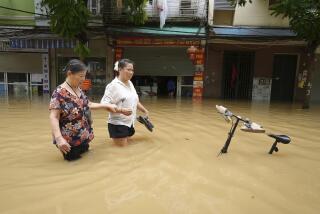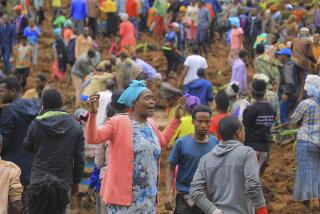Cyclone deaths in Mozambique could top 1,000
Even as flood waters began to recede in parts of Mozambique on Friday, fears rose that the death toll could soar as bodies are revealed.
The number of deaths could be beyond the 1,000 predicted by the country’s president earlier this week, said Elhadj As Sy, the secretary-general of the International Federation of Red Cross and Red Crescent Societies
In addition to worries about the number of dead, As Sy told the Associated Press that the humanitarian needs are great.
“They are nowhere near the scale and magnitude of the problem,” As Sy said. “And I fear we will be seeing more in the weeks and months ahead, and we should brace ourselves.”
Thousands of people were making a grim voyage toward the city of Beira, which although 90% destroyed has become a center for frantic rescue efforts throughout the region.
Some walked along roads carved away by the raging waters a week ago. Others, hundreds of them, were ferried in an extraordinary makeshift effort by local fishermen who plucked stranded people from small islands.
Helicopters set off into the rain for another day of efforts to find people clinging to rooftops and trees.
For those who reach Beira with their few remaining possessions, life is grim. Waterborne diseases are a growing concern as water and sanitation systems were largely destroyed.
“The situation is simply horrendous, there is no other way to describe it,” As Sy said after touring transit camps for the growing number of displaced. “Three thousand people who are living in a school that has 15 classrooms and six, only six, toilets. You can imagine how much we are sitting on a water and sanitation ticking bomb.”
He said what moved him the most was the number of children without their parents, separated in the chaos or newly orphaned.

For residents of Beira, life staggered on. People salvaged the metal strips of roofs that had been peeled away like the skin of a fruit. Downed trees littered the streets. And yet there were flashes of life as it used to be. White wedding dresses stood pristine behind a shop window that hadn’t shattered.
Zimbabwe was also affected by the cyclone, and as roads began to clear and some basic communications were set up, a fuller picture of the extent of the damage there is beginning to emerge.
The victims are diverse: a mother buried in the same grave with her child, headmasters missing along with dozens of students, illegal gold and diamond miners swept away by raging rivers, and police officers washed away with their prisoners.
The Ministry of Information said 30 pupils, two headmasters and a teacher are missing.
Zimbabwean President Emmerson Mnangagwa said Thursday that officers and prisoners were washed way.
In Mutare, fear gripped residents even though they are more than 85 miles from Chimanimani, the worst-hit part of Zimbabwe.
Maina Chisiriirwa, a city resident, said she buried her son-in-law, who had left the city to go to Chiadzwa diamond fields to mine illegally.
“There are no jobs and all he wanted was to feed his family. He was with his colleagues. They thought it would be easier to mine since the rains would keep the guards and the police away from patrolling,” Chisiriirwa said. His colleagues survived but her son-in-law was swept away, she said.
A man who traveled several miles to a reception center for survivors in Chimanimani said several of his colleagues were swept away as they tried to cross a river while fleeing from a mountain known for rich gold deposits and frequented by hordes of illegal miners.
More to Read
Sign up for Essential California
The most important California stories and recommendations in your inbox every morning.
You may occasionally receive promotional content from the Los Angeles Times.










